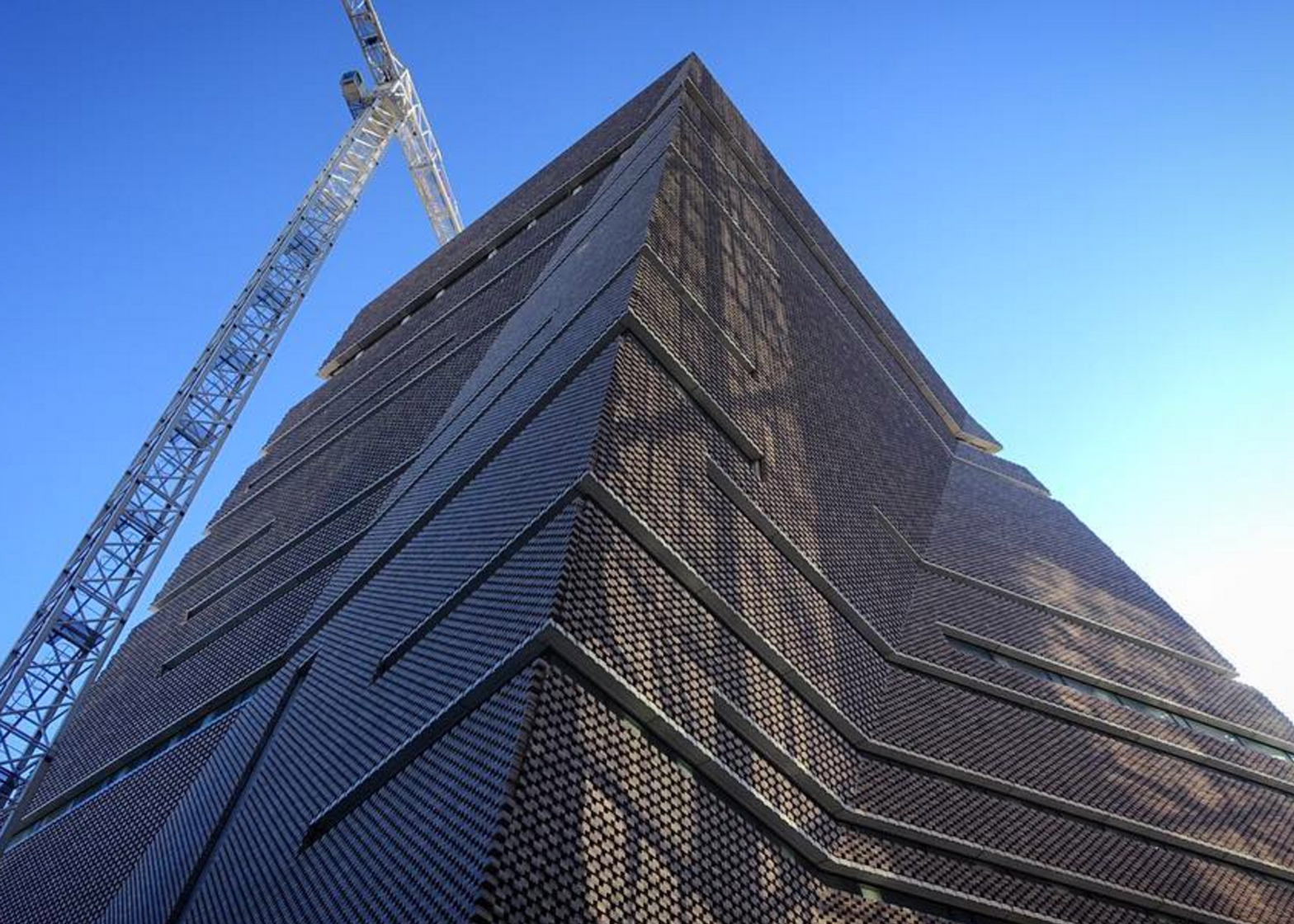With just over a month to go before London's Tate Modern opens its new Herzog & de Meuron-designed wing, Instagram users have been sharing images of the angular brick structure.
Set to launch on 17 June, just over 16 years after Tate Modern first opened, the south wing will significantly increase gallery space, as well as providing new subterranean spaces for performance art.
It comprises a 64.5-metre-high tower with faceted surfaces, textured brickwork, slender windows that form horizontal stripes, and an elevated terrace.
Herzog & de Meuron was invited to work on the new wing following the success of its design for the main building – a conversion of the former Bankside Power Station designed by Giles Gilbert Scott.
The perforated brick walls of the new addition are intended to resonate with the 64-year-old brickwork of the old power station, while its height is two-thirds that of the now-defunct chimney.
"We wanted the combined elements of Tate Modern, old and new, to be expressed as a whole, to have them come together and function as a single organism," said Herzog & de Meuron, describing the building back in 2011.
"Using the same base palette of bricks and brickwork in a radical new way, we created a perforated brick screen through which light filters in the day and through which the building will glow at night."
"As well as doubling the gallery space, The Tate Modern Project will create a diverse collection of public spaces dedicated to relaxation and reflection, making and doing, group learning and private study," said the firm.
"The vertical orientation of these spaces is clear in the same way that a horizontal orientation is evident in the first phase of the Tate Modern."
Herzog & de Meuron was relatively unknown when it won the original Tate Modern commission, but has since completed a number of gallery projects around the world, including the Perez Museum in Miami, the Parrish Art Museum in New York state, and an extension to the Musée Unterlinden in France.
It has also designed M+, the new museum of visual culture for Hong Kong's West Kowloon Cultural District.
The Basel-based firm has been working on the Tate Modern extension for several years, having won planning permission in 2009.
The three underground spaces, called The Tanks, opened in 2012 but later closed to allow the new structure to be built on top.

